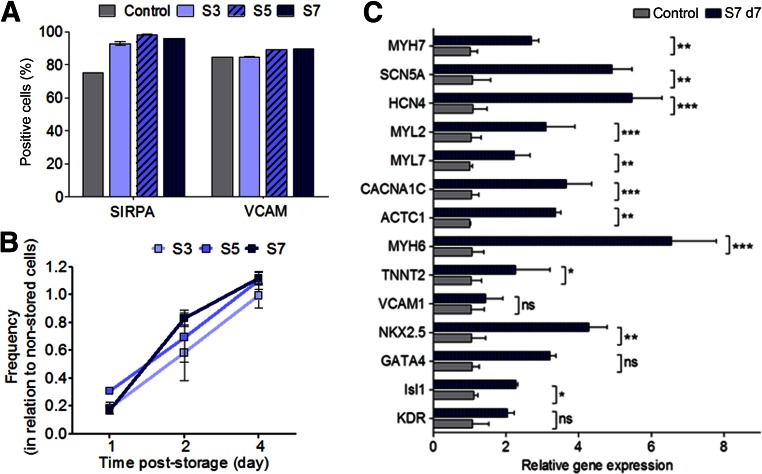Figure 3.
Characterization of hiPSC-CMs stored as two-dimensional (2D) monolayers in hypothermic conditions for up to 7 days. (A): Percentage of SIRPA and VCAM-positive cells determined by flow cytometry. (B): The beating frequency (beats per minute) after all storage intervals (S3, S5, and S7) was monitored until day 4 of culture after storage in hiPSC-CMs cultured as 2D monolayers. The results were normalized to the beating frequency measured in the control cells not subjected to cold storage. (C): Quantitative reverse-transcriptase polymerase chain reaction analysis showing the relative expression of cardiac-related transcription factors, cardiac-specific structural genes, calcium handling, and membrane ion channels in the S7 condition, after 7 days in culture poststorage. Values were normalized to the control, cells not subjected to cold storage, and maintained in culture for the same time period. Data are presented as mean ± SD of at least three measurements. ∗, p < .05; ∗∗, p < .01; ∗∗∗, p < .001; ns, as determined by unpaired t test. Abbreviations: d7, after 7 days in culture poststorage; hiPSC-CM, human induced pluripotent stem cell-derived cardiomyocyte; ns, not significant; SIRPA, signal-regulatory protein alpha; VCAM, vascular cell adhesion molecule.

